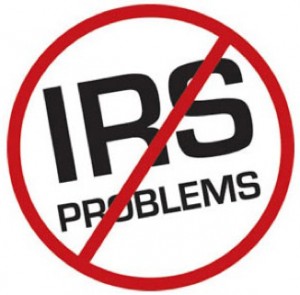… where certain companies advertise that they can settle an IRS debt for pennies on the dollar? Usually the offer is too good to be true. Besides the fact, you never wanted to have these IRS problems in the first place. The chances of an individual being audited have approximately doubled since 2000. So you need to be careful with your tax return.
IRS officials say research has shown that tax “noncompliance” typically is highest among people who work for themselves, who deal in large amounts of cash, who don’t have taxes withheld from their pay and whose income isn’t reported separately to the IRS, such as by their employer.
Another area that the IRS has been focusing on for noncompliance is “S corporations”. With a typical S corporation, profits or losses flow through to the individual owners, who in turn are supposed to report those items on their individual returns.
Another area that could command attention is capital gains taxes. The reason: IRS officials suspect the government is losing billions of dollars in tax revenue because many investors inflate the cost basis or the price they originally paid for stocks and other securities, in order to report lower capital gains when the securities are sold.
There have been some significant changes in the way the IRS targets businesses for audits and how it conducts them. Audits are up this year and will continue to increase,
But the numbers are very misleading, because the IRS is getting much smarter about how it chooses returns for audit and how its examiners conduct their audits.
Over the past few years, the IRS has dramatically stepped up efforts to study specific industries, and to educate examiners about business practices, terminology, accounting methods and common industry practices. It has also identified areas of inquiry that produce audit results.
Examiners are told specifically to look for certain red flags to get at what is really going on in a business or transaction. The result: examinations are more sharply focused on potential areas that will generate increased taxes, penalties and interest. Fortunately, there is a positive side to all of this; it’s very easy to obtain a free copy of this information from the IRS.
Our client hired us to do an audit of his income taxes for the last three years, both personally and for his various businesses. What we found was shocking. Even though this client had used an accounting firm for his various returns, the taxes he had paid were far from what he owed. Luckily for him, it was an overpayment. This client will get a refund of almost $200,000
Now let us turn to more positive alternatives, things that you can take the initiative on.
· Cash balance plan: A cash balance plan is a retirement plan that allows large contributions for owners. The deduction for owner sometimes can exceed salary. It can be combined with a 401(k) plan.
· SEP_IRA or basic profit-sharing plan? Think K instead. Many small business owners have used a SEP-IRA or basic profit sharing plan for their retirement needs due to the simplicity and low cost of these designs.
However, recent changes to the Internal Revenue Code have made these designs virtually obsolete. The K is a retirement plan for the small business owner that allows him or her to achieve: greater potential contributions; “catch up” deferrals at age 50+; increased current tax savings; plan loans up to $50,000; expand survivor benefits; complete flexibility; and low costs.
Unlike SEP-IRA, a K will allow you to borrow up to 50 percent of your account balance (not to exceed $50,000) as long as you pay yourself back. And whereas a typical 401(k) plan may cost $1,000 or more to establish and perhaps more to administer each year, a K can be established and administered for a fraction of that cost.

